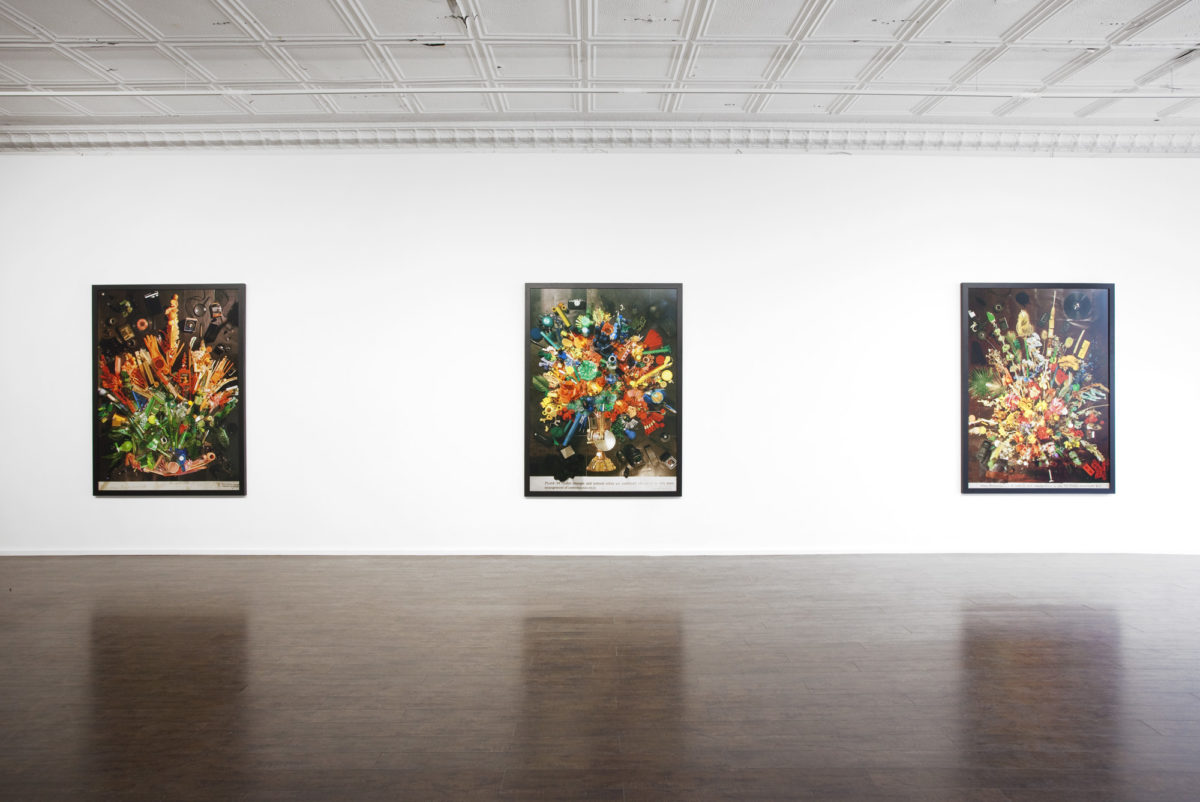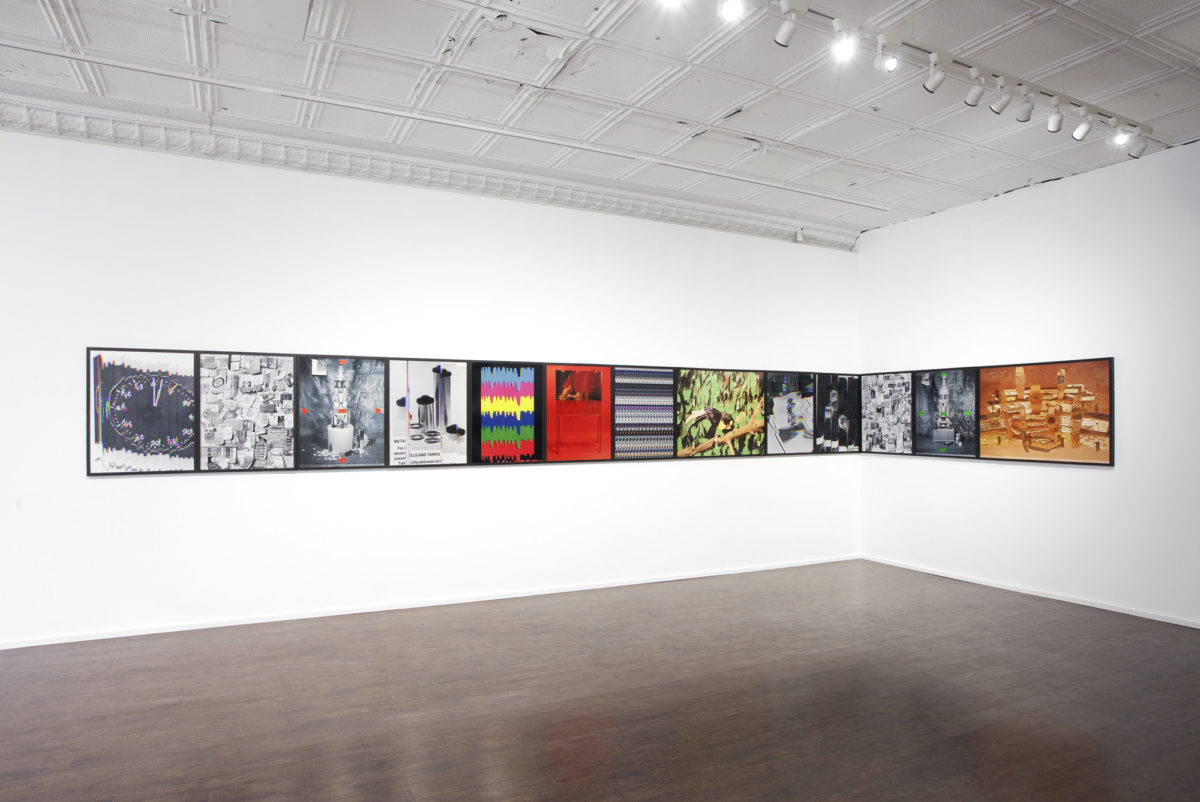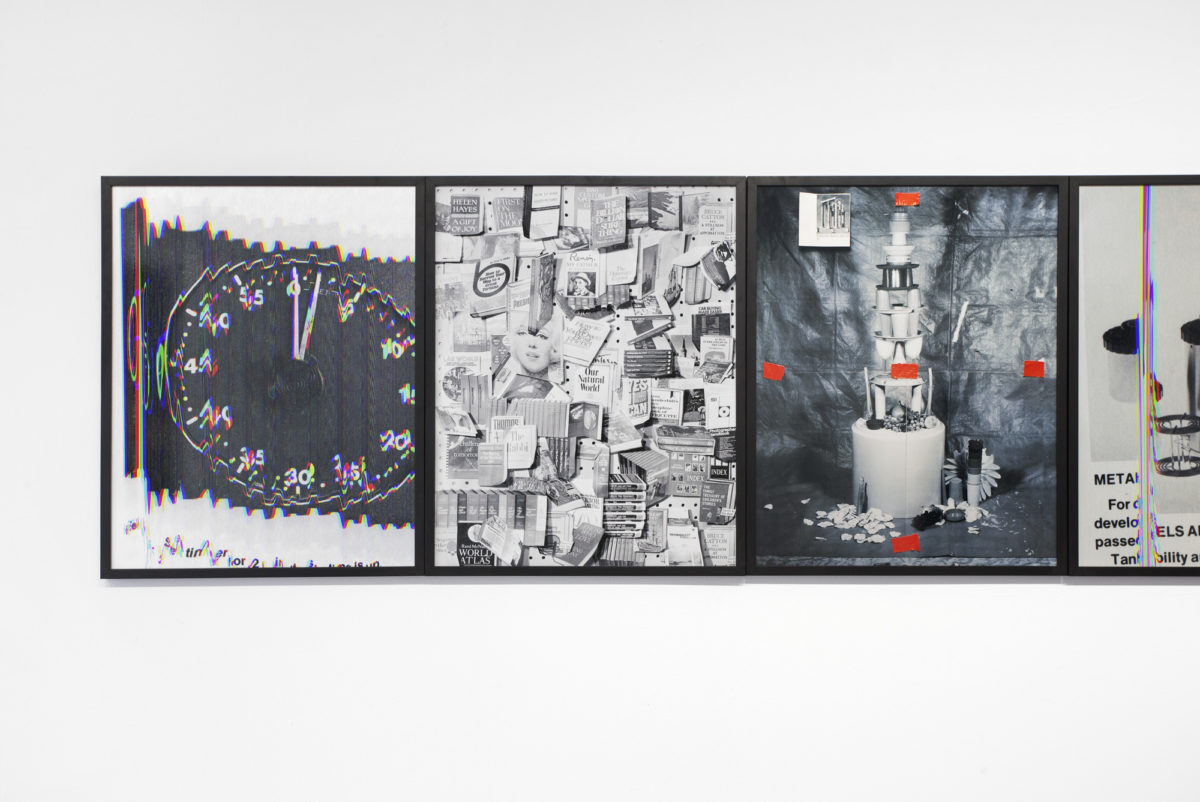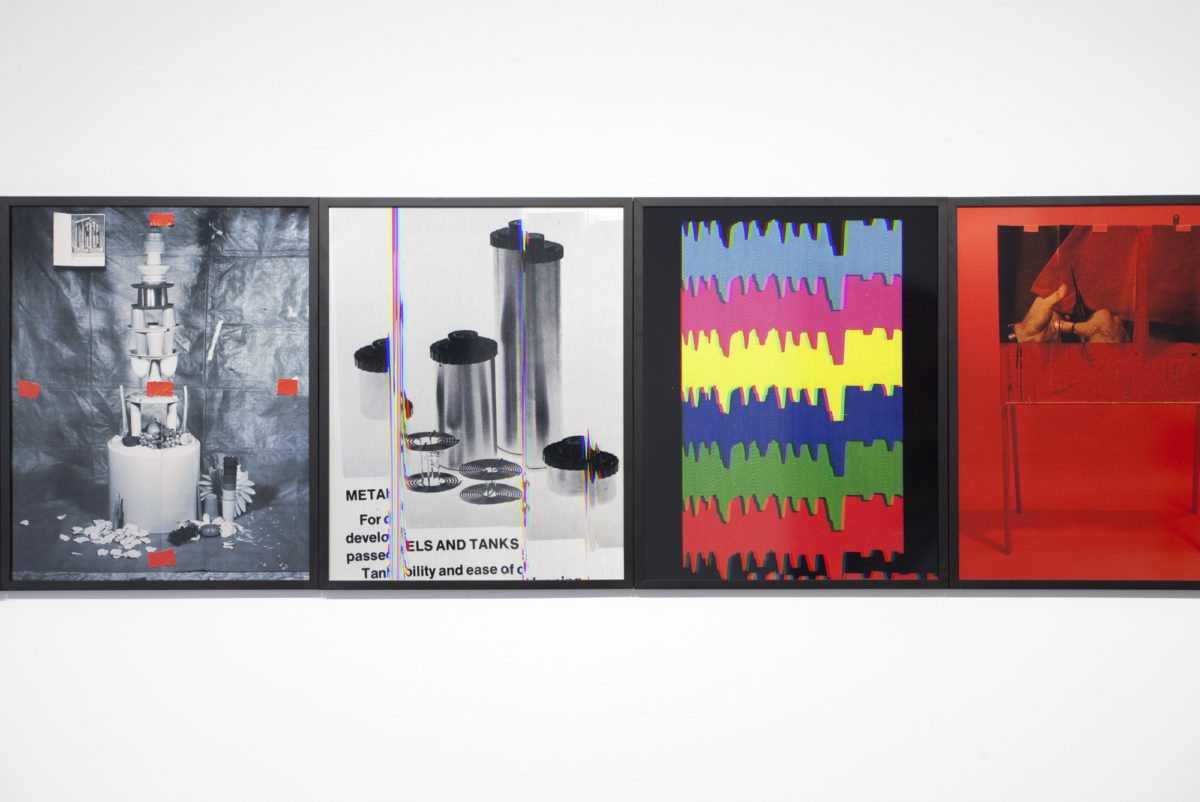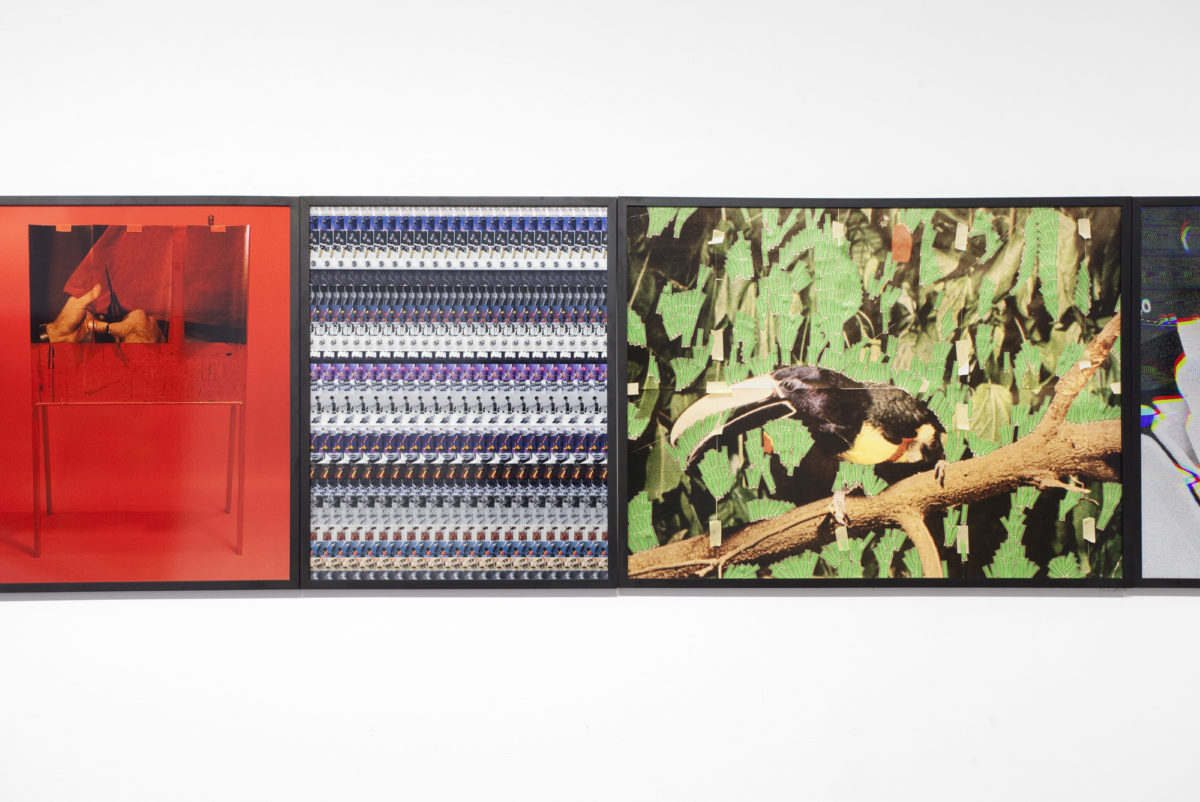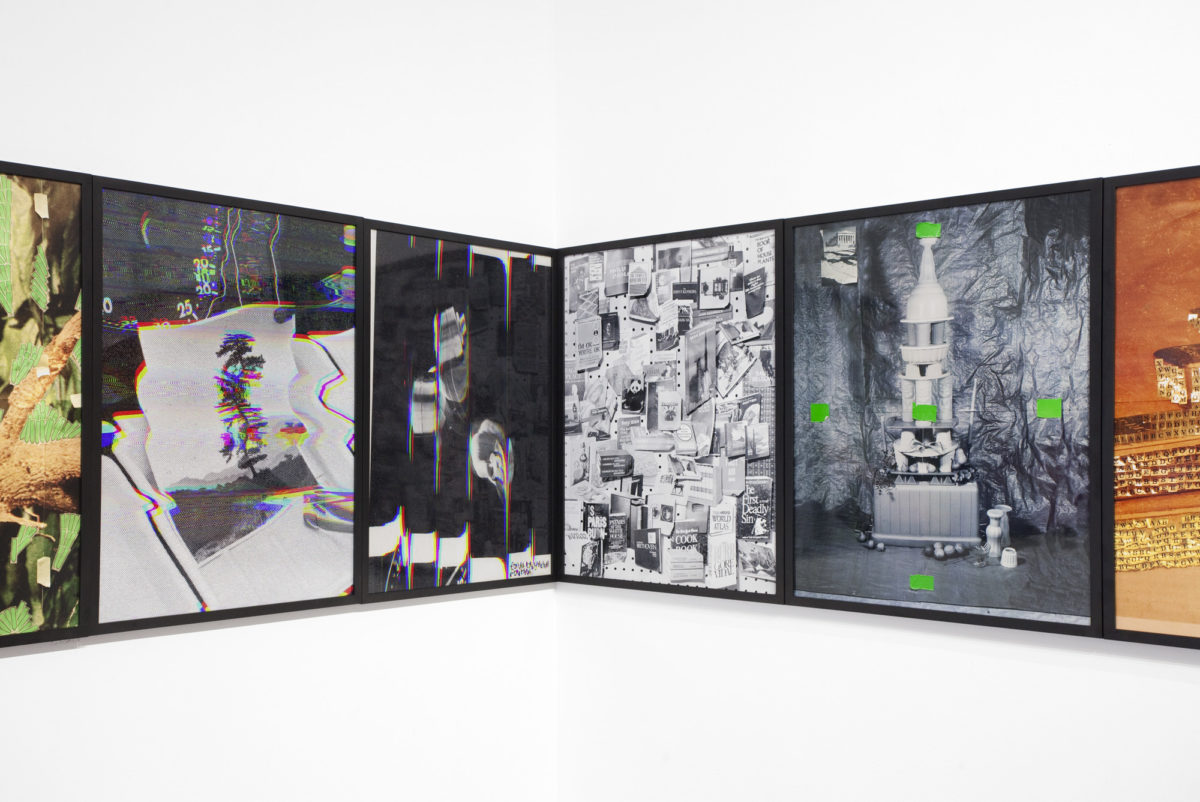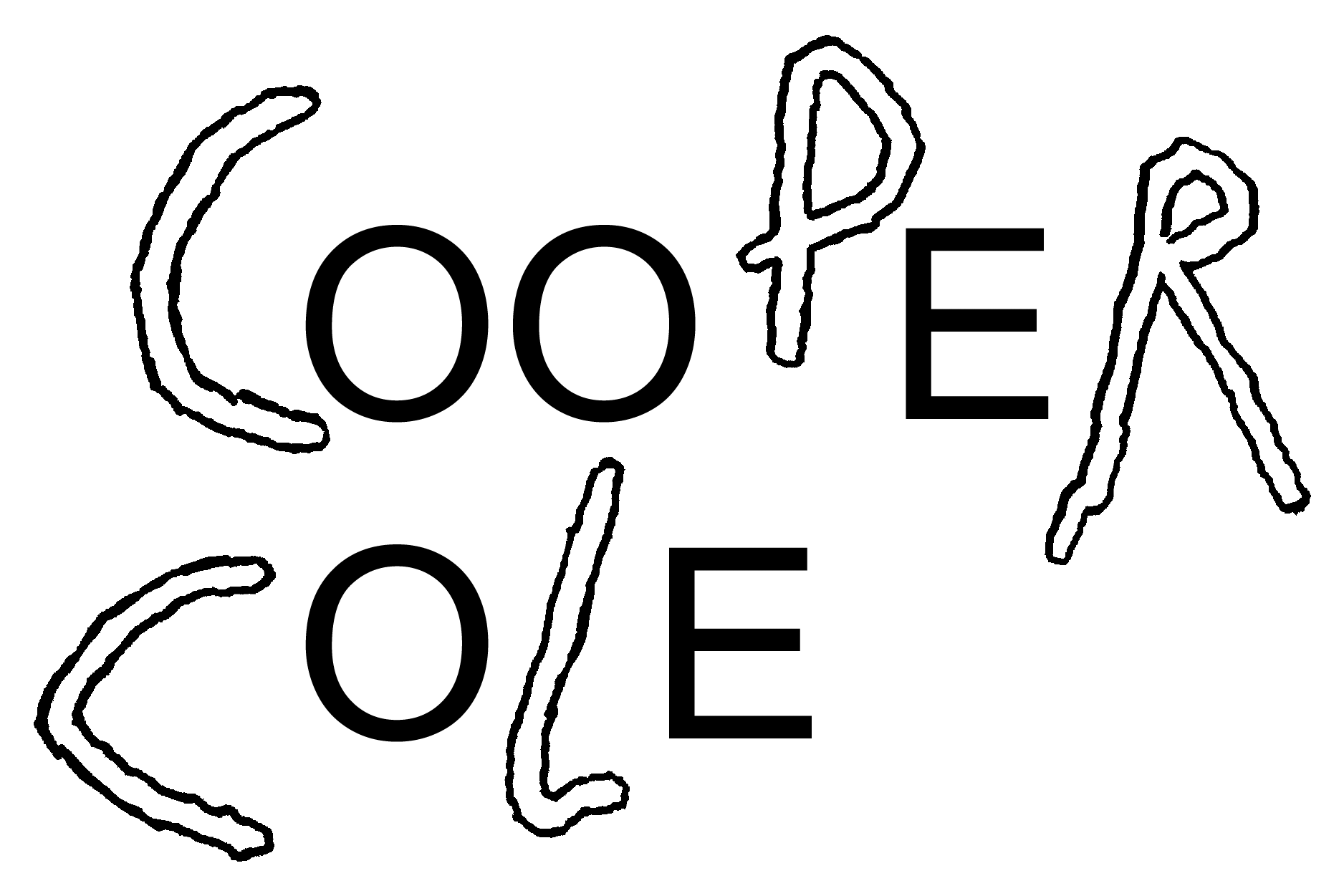


COOPER COLE is pleased to announce an exhibition of new work from photographer Sara Cwynar, Flat Death.
Sara says, “The exhibition began forming in my mind when I read and re-read this section of [Delillo’s] White Noise about the Most Photographed Barn in America”:
Several days later Murray asked me about a tourist attraction known as the most photographed barn in America. We drove 22 miles into the country around Farmington. There were meadows and apple orchards. White fences trailed through the rolling fields. Soon the sign started appearing. THE MOST PHOTOGRAPHED BARN IN AMERICA. We counted five signs before we reached the site. There were 40 cars and a tour bus in the makeshift lot. We walked along a cowpath to the slightly elevated spot set aside for viewing and photographing. All the people had cameras; some had tripods, telephoto lenses, filter kits. […]
“No one sees the barn,” he said finally. A long silence followed.
“Once you’ve seen the signs about the barn, it becomes impossible to see the barn.”
He fell silent once more. People with cameras left the elevated site, replaced by others.
“We’re not here to capture an image, we’re here to maintain one. Every photograph reinforces the aura. Can you feel it, Jack? An accumulation of nameless energies.”
There was an extended silence. The man in the booth sold postcards and slides.
“Being here is a kind of spiritual surrender. We see only what the others see. The thousands who were here in the past, those who will come in the future. We’ve agreed to be part of a collective perception. It literally colors our vision. A religious experience in a way, like all tourism.”
Another silence ensued.
“They are taking pictures of taking pictures,” he said.
In 2005, I read an article about this same barn, used then as an example of the social life of the photograph; it was something about the slipperiness of photography, the transfer of value from the thing itself to the image, and then increasingly further from it. There is also something about the ways in which we most often engage with photography – thoughtlessly, through stock imagery, adverts, commercial photographs, postcards; these rigourously streamlined and rhetorical pictures. When do we see the object itself?
Trained as a graphic designer and formerly on staff at The New York Times magazine, Cwynar has observed and participated in this process of priming images for wide publics, developing a singular relationship to the photograph and its history in print. As an artist, she is a studio photographer, using this controlled space to remove images from circulation and introduce new ones, not unlike and certainly in reference to failed modernist attempts of capturing and obtaining the world photographically and ostensibly objectively. In contrast, the artist comes to photography by way of intuition, privileging a personal relationship to image histories (those still with us and those now obsolete) and photographic theory. She begins projects from Barthes’ remarks, passages from Kundera, old film stock, outdated adverts in discarded magazines, photo archives in public libraries, and absurdly de-contextualized stock photographs: her mind (and her studio) an expanding archive of nonhierarchical materials to be re-constructed and re-documented. These personal beginnings always, however, lead to the ways in which images act as coded signs and symbols in broader arenas.
I once gave the artist a copy of Barthes’ Camera Lucida for Christmas and it is now well-worn, dogeared. Yesterday, she writes: “pages 92-96 contain the important bits!” In which a mourning Barthes discusses a photograph of his dead mother (to whom he was extremely close) as a young girl, building a metaphor for the death that occurs in the moment of freezing an image on film. The subject is from then on condemned to stand in for a no-longer-existent present. One could say the same of a 1960s still life floral arrangement, unearthed in 2013 in the New York Picture Library.
These new photographs are in permanent transition, wavering between analogue and digital, surface and depth, past and present, zooming in and out between the particular and the universal. Just another stock photo, or a subjective construction of the photographic medium’s historical lineage? They are never one thing, relying instead on juxtaposition: when a reference to photography’s past is placed through a digital scanner; when a scribbled phrase or title comes into contact with a found photo, with this plastic cup I bought at the dollar store and have hoarded in my studio. Within the photographs in the exhibition, and in her past and future work, the same objects, motifs, and images recur – flattened to become slick and consumable surfaces, but not yet dead.
Image Maintenance would have been a nice title for the exhibition.
Some of S’s other Potential Titles:
Contemporary Arrangements
Advanced Film
Part of the Aura
*An essay by Kari Cwynar, constructed of the artist’s notes, annotated and re-interpreted, following the artist’s method of re-working material that’s already there.
Sara Cwynar (b. 1985, Vancouver, Canada) graduated in 2010 from York University with her Bachelor of Design. Artist Sara Cwynar has exhibited at Foam Photography Museum, Amsterdam, Netherlands; Art Basel Miami, Miami, USA and the Museum of Modern Art, New York, USA. Sara Cwynar is currently living and working in Brooklyn, New York.
For additional information please contact the gallery:
info@coopercolegallery.com
+1.416.531.8000
